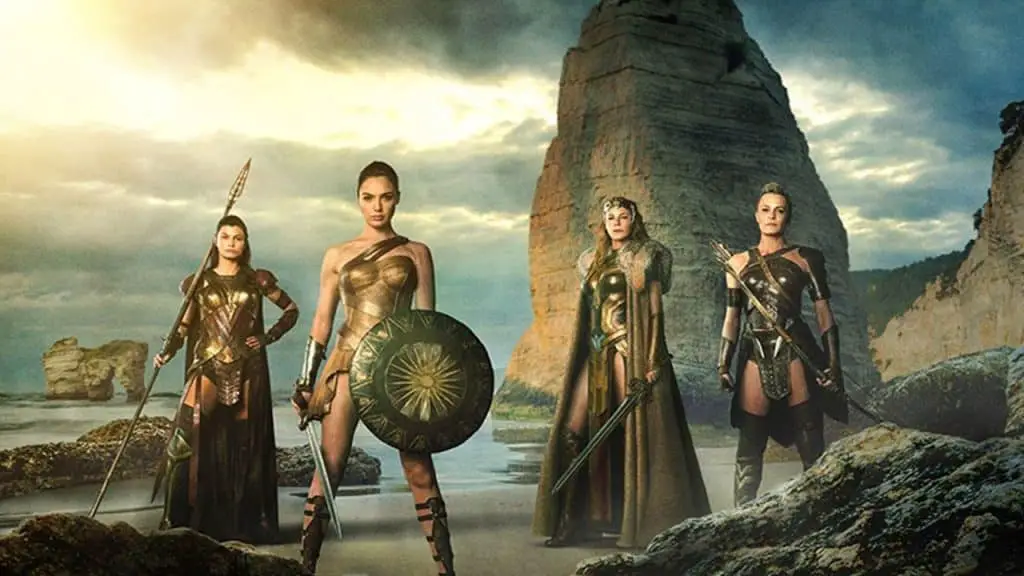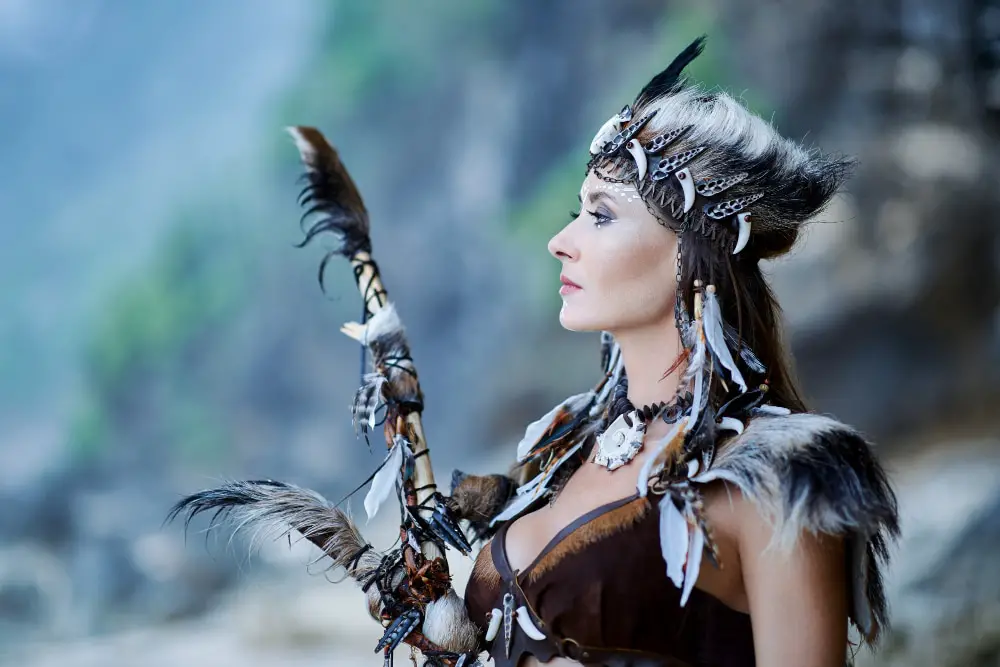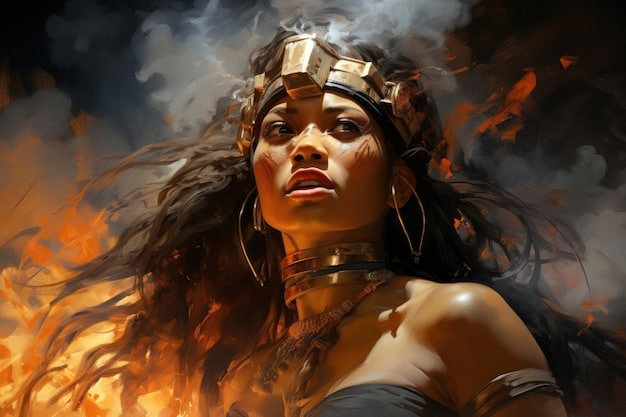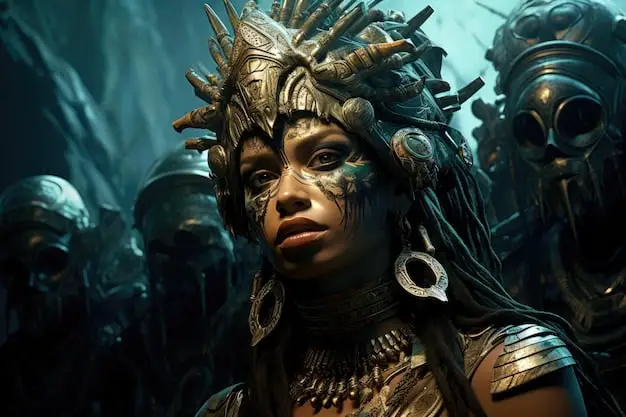The Amazons of ancient Greek mythology, fierce female warriors said to roam a vast area around the Black Sea known as Scythia, were they real? Or were they fictitious like other Greek myths, such as Aphrodite emerging from genitals thrown into the sea or Jason stealing a golden fleece?
Are Amazon warriors the fruit of human imagination?
Modern historians assume that the Amazons, first documented by the poet Homer in the 8th century BC, were a fantasy. But then, in the 1990s, archaeologists began identifying ancient female skeletons buried in warrior graves in the same region.
Some skeletons were found with battle wounds, such as arrowheads embedded in the bones, and were buried with weapons that matched those held by Amazons in ancient Greek artworks, according to Adrienne Mayor, a researcher in the department of classics and the History of Science program at Stanford University.
“Thanks to archaeology, we now know that Amazonian myths, once thought to be fictional, contain accurate details about nomadic steppe women, who were the historical counterparts of the mythical Amazons,” said Mayor, also author of “The Amazons: Lives and Legends of Female Warriors in the Ancient World” (Princeton University Press, 2014).
These nomadic warriors were part of an ancient group of tribes known as the Scythians, who were masters of horseback riding and archery. They lived in a vast territory in the Eurasian steppe, stretching from the Black Sea to China, from about 700 BC to 500 AD, Mayor wrote in Foreign Affairs magazine in 2015.

The Scythians were an uncompromising people; they had a reputation for drinking excessive amounts of undiluted wine (unlike the Greeks, who mixed wine with water), drinking fermented mare’s milk, and even getting high on hemp, according to the British Museum. According to the museum, the frozen bodies of mummified Scythians preserved in permafrost reveal that they were heavily tattooed with animals.
Scythian societies were not exclusively female, as in Greek myth; they simply included female members who lived like men. In essence, some (but not all) Scythian women joined men in hunting and battle.
“It’s exhilarating to know that girls and women in the steppes learned to ride horses and shoot arrows just like their brothers,” the mayor told LiveScience. He explained that for a small group moving across the harsh steppe lands, under the constant threat of enemies, it made sense for everyone to help in defense and raids, regardless of age or gender.
According to the mayor’s article in Foreign Affairs, active female warriors aged between 10 and 45 were found at Scythian burial sites. “So far, archaeologists have identified more than 300 remains of female warriors buried with their horses and weapons, and more are discovered every year.”
The Scythians were not the only group to have women participate in warfare and hunting, and the Greeks were not the only ones to tell stories about Amazons and Amazon-like women.

“There were thrilling stories – some fictional and some based in reality – about Amazon-like women from ancient Rome, Egypt, North Africa, Arabia, Mesopotamia, Persia, Central Asia, India [e] China,” the mayor said. “And women who went to war have existed in cultures around the world, from Vietnam to the Viking lands, and in Africa and the Americas.”
The name of the Amazon River in South America is linked to one of these stories. According to the Encyclopedia Britannica, the Spanish soldier Francisco de Orellana – credited as the first European to explore the Amazon, in 1541 – gave the river its name after being attacked by female warriors who he likened to the mythological Amazon warriors we now know were based on the Scythians.
Who were the Amazons?
The myth says that Amazons were the most powerful women ever. In ancient times, they were said to be a tribe of powerful, independent women who had rebelled against male-dominated society. They lived in isolated places, excluded men from their society and waged wars against them. Today we can call them the first extreme feminists.
Little is known about the legendary Amazons, most of which are drawn from myths. Only a few historical facts have been discovered that demonstrate the existence and development of an Amazonian culture. Some believe they were just a fairy tale told to comfort oppressed women of antiquity. Others say it is a fable that shows the superiority of manhood, since in every battle between men and women, men seem to win.
Another interesting point is that the legend of the Amazons appears in the myths of many tribes. In any case, the truth is that this ancient story has fascinated many historians, writers, directors and intrigued the minds of all people
The myth says that they lived in the city of Themiscyra, off the River Thermodon in Asia Minor, and were a race of powerful female warriors. Their society was ruled strictly and exclusively by women, providing a fascinating contrast to the male-dominated society of ancient times.

Men were not allowed to become members of their society unless it was for the specific purpose of mating or slavery. Perhaps this is why Homer describes them in the Iliad as “women who go to war like men” and Eredotus uses the term “Androktones” for them, which means “man-killers”.
In fact, they lived like soldiers and their purpose in life was to wage wars against men. From childhood, girls were taught the nuances of war. Their weapons were the bow and arrow, the librys (a kind of double-edged axe), and a crescent-shaped shield.
The Amazons displayed unsurpassed skill and excellence as horse trainers and riders. Peculiar, but perhaps justified from the point of view of the Amazons, was the removal of a girl’s right breast.
While still a girl, her right breast was cauterized using a red-hot bronze instrument. It was thought to be a necessary evil, maiming and removing every possible obstacle to the use of the spear or the drawing of an arrow.
This practice may have given them the name Amazons from the classical Greek word “Amazoi,” which translates to men without breasts, with full breasts, or who do not touch each other. “Full-chested” seems like a paradox, but that’s exactly how Amazons have been depicted, both in sculptures and paintings. These women were more attuned to war than feminism.
Amazons were not allowed to marry, because they thought it was a form of slavery to a man. However, to further their race, they most often mated with men from neighboring societies or with beautiful prisoners of war. Once their purpose was achieved, the prisoners were used as slaves or killed.
A male child suffered a fate similar to that of his father. If a boy were born, their mothers would kill him or send him away. Sometimes he was kept alive to grow and be used for sexual pleasure or as a supplier of human semen. In contrast, when a baby girl was born, she was cared for, fed, and raised essentially as a warrior, but still as a good woman.

The modern popular imagination has settled them in isolated and remote regions, where they could protect themselves from the invasions of men and has dressed the Amazons in leather clothes that cover only some parts of the body. In ancient ceramic vases, they were depicted with long dresses that reached down to the knees.
Greek mythology has a number of well-known myths related to the life of the Amazons and their interaction with humans and the rest of the world. Here we mention some of them to get an insight into their life, culture and beliefs.
Theseus and Antiope – Another myth tells that Hercules, on his journey to the land of the Amazons in search of Hippolyta’s belt, was accompanied by his friend Theseus.
Theseus was the king of Attica and was seduced by Antiope, one of Hippolyta’s sisters, whom he kidnapped and brought back to Athens. Although she hated him at first, she eventually fell in love with him and married him. From them a boy was born who Antiope named Hippolytus, in memory of her sister. She was the only Amazon to have left the Amazon tribe to marry.
Many years passed and one day the Amazons attacked Athens in the hope of saving the kidnapped Antiope. Despite being considered impregnable, Theseus’ fortress was invaded by Molpadia. He found Antiope and wanted to take her back, but Antiope did not intend to leave her husband. In a fit of rage, Molpadia pierced Antiope with her spear.
The battle went in favor of the Greeks and Molpadia herself was killed by the enraged Theseus. This legendary battle between the Amazons and the Greeks was later depicted in reliefs and known as the Amazonomachy, depicting the triumph of a civilized race over those considered barbarians.
The Amazons were not known to be favorably disposed towards the institution of marriage. However, they engaged in sexual activity to justify the continuity of their race, whether with men from neighboring clans, prisoners of war, or random men they encountered. Taking inspiration from their wild and untamed existence, their sexuality was of the animal type: under the cover of darkness, isolated and nihilistic, that is, deriving no pleasure from the act.

They may have seen passion and war as reflections of each other, fighting passionately and loving with a passion that bordered on the almost aggressive. Sex was simply a means, entirely superfluous unless the consequence was to the advantage of the female warriors, that advantage being the birth of a female child, who was fiercely protected and raised as warriors and successors. When a boy was born, they killed him, blinded him or, if he was lucky enough, he was sent to live with his father.
Herodotus however claimed that the Amazons and ancient Scythians shared an intimate relationship. A Scythian man made amorous advances towards an Amazon only when she was alone. Once it became apparent that she was not against his approach, they would have sexual intercourse.
This is indicative that the desire for sexual contact would outweigh their hatred of men. In this approach, the Amazons were domesticated, introducing an aspect of desire and love into their aggressive nature.
Amazons avoided sexual encounters while serving in the army or in times of war. It was an unwritten law for them to excel in war and prove themselves worthy before mating. Apparently, a virgin warrior meant that she was not yet exposed to the desires of the flesh and therefore she would not succumb to the advances of a man. It can be hypothesized that their repressed anger when they served in the army, before they could satisfy their sexual needs, contributed to the aggression they displayed as warriors.
On the other hand, maintaining their virginity during military service may have been a form of self-sacrifice, which made them feel less inclined to female desires and put them on an equal footing with men.
Marriage would only teach women to become submissive and that is why they thought of marriage as a form of slavery: slavery to your husband, family husband and children.
#Amazon #warriors #exist
